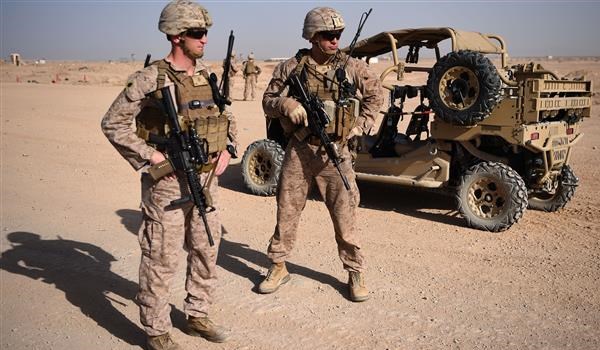
Thanks to the unjustified 2001 US-led invasion, the Taliban still has open and active presence in the country, and worse still, ISIL has gained more territory than ever before. In between, the number of districts controlled or influenced by the Afghan government has been one of the last remaining publicly available indicators for members of the United Nations and for the world public of how the 16-year-long US occupation is faring.
While the US and Afghan governments assert that they control most of the country, months of research across the country by Western media shows that the Taliban now control or threaten much more territory than before. This is because many still join the group to counter US military presence and occupation. Besides, the US has failed to rebuild the country as it promised only if it could stay there longer, and many Western nations which pledged to pay the reconstruction money upfront have also backtracked.
As a consequence, about 15 million Afghans, or half of the country, now live in areas controlled by the Taliban or at risk of Taliban control. In parts of the country where the group is most open and active, attacks now take place about twice a week.
More than 31,000 civilians have been killed in Afghanistan since American troops arrived in October 2001, with more than 8,500 injured or killed in 2017. Twenty-four hundred American troops and hundreds of foreign soldiers have also been killed since the war began.
Expect more bloodshed anyhow. As fresh US troop reinforcements prepare to deploy to Afghanistan, it is obvious that the conflict cannot be solved by military means. Many UN member states and the rights groups have also voiced their reservations about the already bloody and protracted conflict in Afghanistan.
They describe President Donald Trump’s decision to deploy additional troops to Afghanistan as “a big mistake.” Some 40,000 US troops are already in the country with about 32,000 other foreign allied forces deployed under NATO authority. At a minimum, the groups say, US occupation and troop deployments need to be rethought.
This is because the solution to Afghanistan’s woes is not US military occupation. The American military can set some conditions but ultimately it will be up to the people of Afghanistan. After all, the insurgency AND occupation are irrelevant once the people of Afghanistan reject it. And they reject American occupation outright. Besides, US military and occupation in Afghanistan hasn’t given Afghans any hope in this deadly muddle. For some good reasons, they prefer not to see any occupying troops in their country:
Over the past 16 years, Afghanistan has been a trying ground for new American weapons and a laboratory for a dizzying number of policy experiments to help prolong the occupation that serves War Party’s interests. US troop levels have surged and ebbed, Taliban militants have been bombed and wooed to the negotiating table, Pakistan has been admonished for US mistakes, and the international community has cooperated and competed in the desperate bid to find a lasting solution to the Afghan problem.
None of them has worked and the situation on the ground for ordinary Afghans only gets worse. The US policy muddle and its brutal consequences have been particularly stark this year, raising questions over whether President Trump’s new Afghanistan strategy can solve or worsen the problem – or not make any difference at all.
Last week’s brutal ambulance attack in Kabul was conducted barely 200 yards away from the main government offices. In their message claiming the ambulance attack, the Taliban blamed Trump’s decision to increase US troop levels and targeted strikes against militant commanders in Afghanistan.
The Taliban are not the only ones speaking from the barrel of a gun. The ISIL terrorist group has also set up operations, attracting disgruntled Taliban fighters and conducting increasingly audacious attacks such as the January 24 assault on the Save the Children offices in the south-eastern city of Jalalabad.
As is, the Taliban has maintained that as long as there are occupying troops in Afghanistan, the group will not engage in peace negotiations, leading to this conclusion that as long as occupation remains the staple of US foreign policy, Afghans will see no peace at all.
With the peace track making no progress, US policy makers are circling back to the old war plan i.e., unilateral military operations against the Taliban on Afghan and Pakistani soils – without the international community on board. If that’s the case, the US strategy for Afghanistan will spin back to square one – 16 years later and after a loss of thousands of Afghan and American lives. This is not in any way good news to the long-suffering people of Afghanistan.
847/940